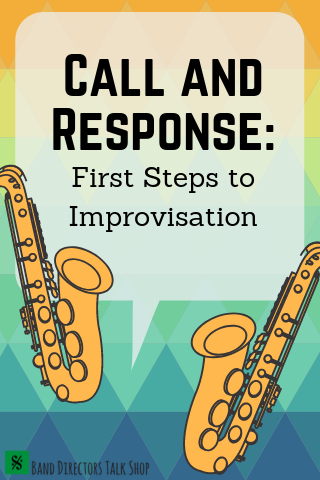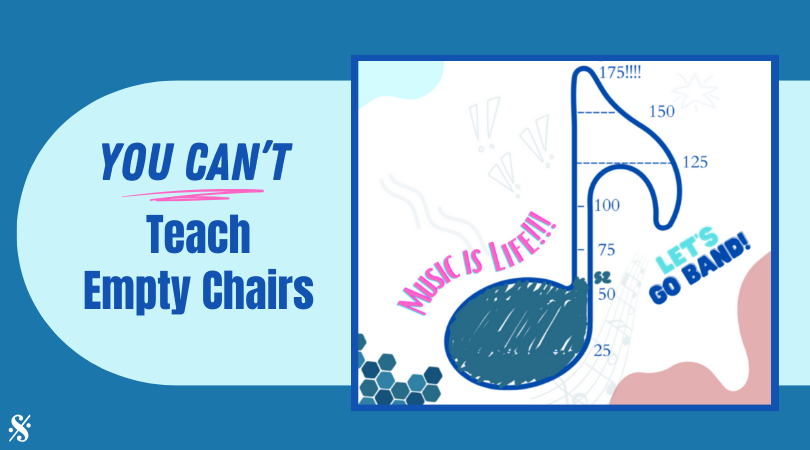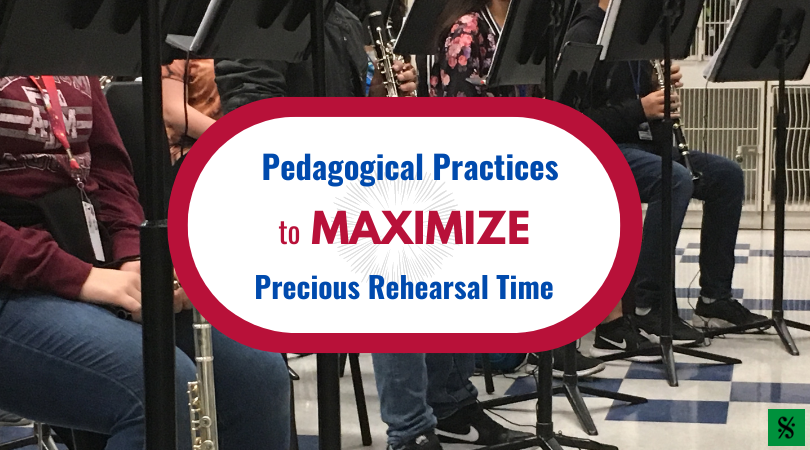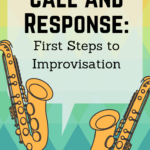Call and Response – First Steps to Improvisation
The National Core Arts Standards, adopted in 2014, feature four categories for student experiences in art education: Creating, Performing/Presenting/Producing, Responding, and Connecting. As band directors, we generally do a great job with the last three categories, but in performance-based classes, creativity is often limited. Improvisation is a great way to introduce creativity into the band room. Through the spontaneous production of musical ideas, students can participate in both the Creating and Performing/Presenting/Producing categories simultaneously.
While improvisation can intimidate teachers and students alike, it does not need to. Improvisation in music is very similar to conversing using spoken language. As young children begin vocalizing, it is common for them to repeat sounds, words, or phrases that they hear. Acquiring musical language through improvisation should happen in a similar way. In this article, I will be demonstrating methods for call and response activities that will allow your students to assimilate musical ideas into their vocabulary.

Foundations
Start With One Note
One note call and response is a perfect place to start. Simply play a four-beat rhythm pattern on a single note and have the students repeat it. I’ve included a sample audio track of myself demonstrating some sample “calls” on a Concert F.
Expand to Multiple Pitches
Once students become comfortable with rhythmic patterns, expand the pitch possibilities. It is best to do this gradually. Start with two note choices and then add three, four, and so on until you have an entire scale’s worth of possibilities. I have again included an audio example below.
Add Articulations
One of the best ways to assess your students’ grasp of articulations is to gauge how well they can listen and replicate a given note length and shape. If they can develop a vast vocabulary of possibilities in their “inner ear”, they will able to apply this to the written repertoire that they play.
Incorporate Scales from Repertoire
If a piece is in a challenging key, or uses the pentatonic scale, or is in a particular mode, do plenty of call and response using the corresponding patterns. You can provide them with a written version of the scale for reference or do the entire process by ear.
Moving into Improvisation
Student-Led Call and Response
Once your students become very comfortable with the call and response process, invite them to create their own “calls” and have the class respond. I never put a student on the spot and force them to lead the activity until they are ready.There are always a few students who are brave and are willing to take the plunge and after those courageous few have their turn, many more students will be open to giving it a try.
Simultaneous Improvisation
Another activity to encourage student creativity is to give each student a space to improvise their own response. In this method, the teacher would play a tonal/rhythmic pattern and each student would respond with a pattern of their own. The resulting sound is a little cacophonous, but you will be surprised at what you can hear in this kind of environment. Your perception can also be enhanced by moving around the room and taking informal samples of different students in each section. You can then tailor your instruction to meet the needs you have just observed. Since everyone is playing, no student should feel self conscious or afraid to play. Make sure that you have created and enforced the expectation that students are kind and supportive of each other at all times.
Closing Thoughts
If a student’s first experience with improvisation is in the context of a jazz solo, they are not being set up for success. The pressure of playing alone in front of others coupled with the complexities of jazz harmony and style combine to make for a very intimidating experience. If students are provided with improvisation instruction from the very beginning of their musical training, using methods similar to those described above, they will come to see improvisation as an essential musical behavior as opposed to some mystical talent that some people simply have and others simply do not. They will begin to gain confidence and expand their musical vocabulary as they develop as players. It is my belief that a student cannot intentionally create a sound that they cannot first imagine and this process helps them connect their imagination to the instrument.
Thomas Graham serves as the Director of Bands at Andrew Lewis Middle School in Salem, VA and is also the Assistant Director of Bands at Salem High School. He is the creator of Band O’Clock, a blog that aims to help music educators build a thriving jazz program at their school. Thomas has recently been published as a contributing author in the book Musicianship: Improvising in Band and Orchestra , available through GIA Publications and is a member of the D’Addario Education Collective. He currently maintains an active schedule as a performer, clinician, author, and marching arts designer. He can be reached at graham.bandoclock@gmail.com.
Related Reading:
Jazz Rhythm Section
The Importance of Playing Duets
Rhythmic Placement – Playing with Musicality
If you would like to receive our weekly newsletter, sign up here.
Don’t forget to like us on Facebook too!
Learn. Share. Inspire.
BandDirectorsTalkShop.com






Leave a Reply
You must be logged in to post a comment.